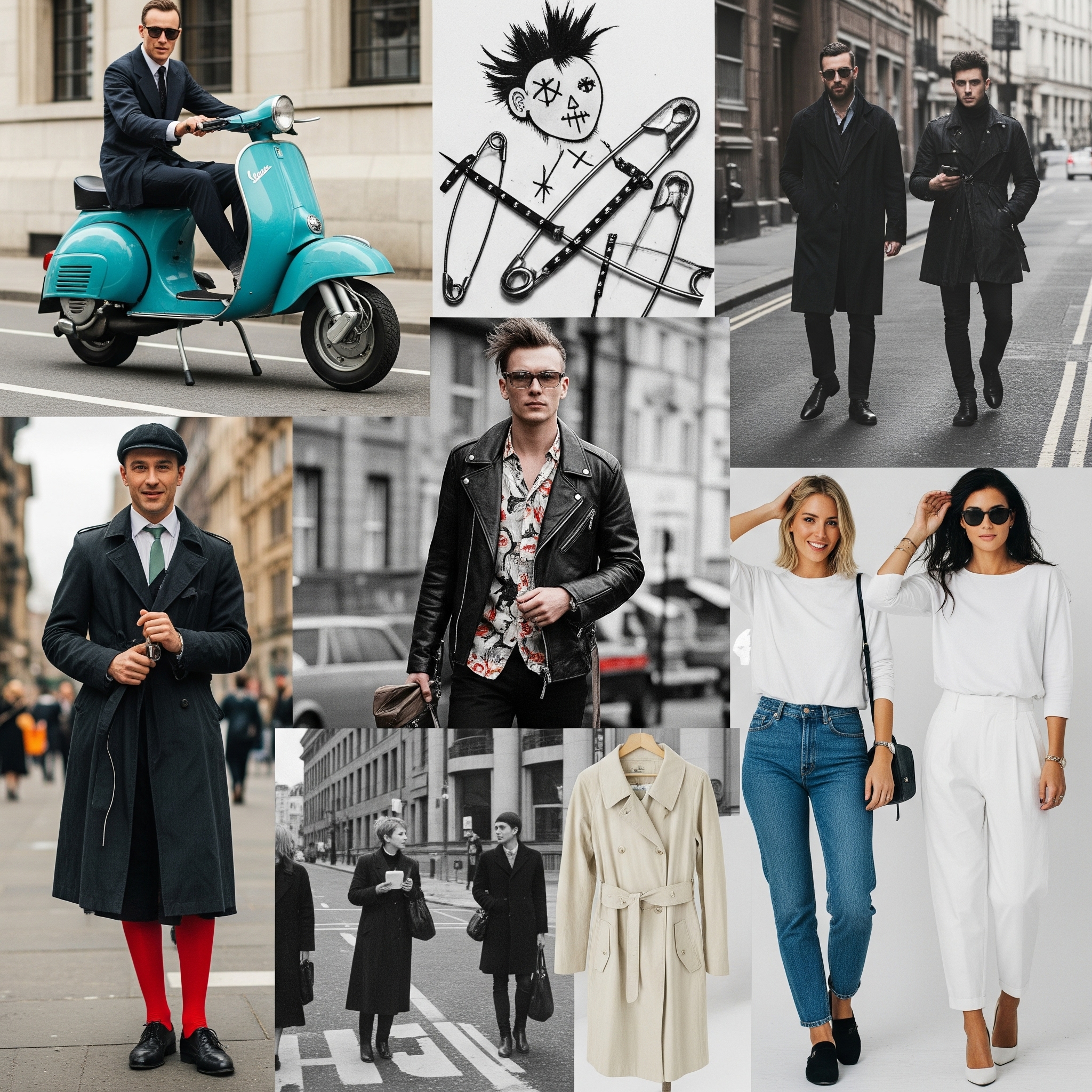
Street style, once a fringe phenomenon observed on the sidewalks outside fashion shows, has evolved into a significant force shaping the fashion industry. It’s no longer just about what designers send down the runway; it’s about how individuals interpret and express fashion in their daily lives. This article explores the fascinating evolution of street style, tracing its roots from subcultural movements to its current status as a global influencer and a legitimate source of trendsetting.
The early seeds of street style can be found in the emergence of youth subcultures throughout the 20th century. Groups like the Mods, Rockers, Punks, and Hippies used clothing as a powerful tool for self-identification and rebellion against mainstream norms. Their distinct styles, often born out of necessity or a desire to express specific ideologies, organically developed on the streets and influenced later fashion trends. For instance, the rebellious leather jackets and skinny jeans of the Rockers or the DIY aesthetic and safety pins of the Punks left an indelible mark on fashion history. These were authentic expressions of identity, not curated looks for the camera.
The rise of photography and fashion media played a crucial role in documenting and disseminating these early forms of street style. Photographers began to capture the unique looks of everyday people, moving beyond the staged perfection of studio shoots and showcasing the raw creativity found on the streets of major cities like London, Paris, and New York. Publications started featuring these images, acknowledging the style happening outside the traditional fashion system. This marked the beginning of street style as a visual phenomenon that could be observed, analyzed, and even emulated.
The internet and the advent of social media in the 21st century revolutionized street style. Platforms like blogs, Instagram, and Pinterest provided new avenues for individuals to share their personal style with a global audience. This democratized fashion, giving a voice and a platform to anyone with a unique sense of style, regardless of their connection to the traditional fashion industry. Suddenly, fashion inspiration could come not just from runways and magazines, but from everyday individuals around the world. This led to an explosion of diverse styles and a blurring of the lines between high fashion and personal expression.
Fashion bloggers and “influencers” emerged as key figures in this new era of street style. They leveraged social media to document their outfits, share styling tips, and collaborate with brands. Their relatability and authentic approach resonated with a vast online audience, making street style a powerful marketing tool and a significant driver of consumer trends. The front rows of fashion shows, once reserved for editors and buyers, now often feature prominent influencers whose street style looks are just as scrutinized and celebrated as the collections on the runway.
The impact of street style on the fashion industry is undeniable. Designers increasingly look to the streets for inspiration, incorporating elements of popular street style trends into their collections. The fast-paced nature of social media means that trends can emerge and gain traction rapidly through street style photography and online sharing. This has led to a more dynamic and responsive fashion landscape, where consumer preferences and individual creativity play a more significant role.
Street style is characterized by its individuality and its rejection of rigid rules. It’s about personal interpretation, creative mixing and matching, and expressing one’s personality through clothing and accessories. Some common elements often seen in contemporary street style include:
- High-Low Dressing: Combining high-end designer pieces with more affordable or vintage finds.
- Comfort and Functionality: A move towards more comfortable and practical clothing, like sneakers, relaxed silhouettes, and functional outerwear.
- Personalized Details: Incorporating unique accessories, DIY elements, and personalized touches that reflect individual style.
- Bold Colors and Prints: Experimenting with vibrant hues and eye-catching patterns to make a statement.
- Layering: Utilizing layers to add depth, texture, and adaptability to outfits.
- Sustainability and Conscious Choices: An increasing awareness of ethical and environmental issues, leading to the embrace of vintage, upcycled, and sustainable brands in street style looks.
However, the rise of street style as a commercially driven phenomenon has also drawn some criticism. The pressure to create visually appealing and “Instagrammable” outfits can sometimes lead to less authentic or more contrived looks. The focus on constant newness and consumption, even within street style, can contradict the growing movement towards sustainability. It’s important to remember that at its core, genuine street style is about individual expression and creativity, not just about chasing trends or accumulating likes.
Despite these critiques, street style remains a vibrant and evolving aspect of the fashion world. It reflects the diverse ways in which people engage with clothing and express their identities in public spaces. From its roots in subcultural rebellion to its current status as a global phenomenon, street style continues to be a dynamic and influential force, shaping not only what we wear but also how we perceive and interact with fashion. It reminds us that style is not just dictated from the top down but emerges organically from the creativity and self-expression of individuals on the streets.
